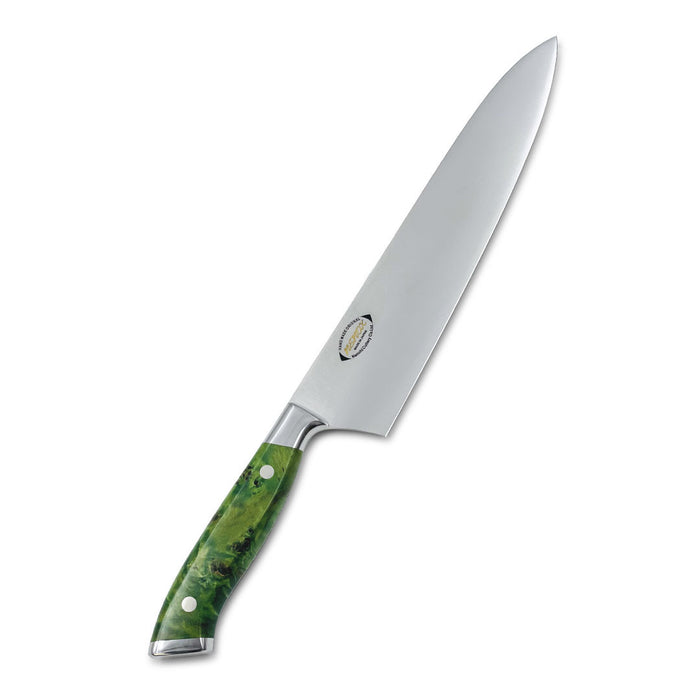
Nenox Gyuto 240mm (9.4") Green Stabilized Wood Handle with Saya Cover
Free Shipping to the Contiguous U.S.
Specifications
- Style : Gyuto
- Length : 240mm (9.4")
- Weight : Approximately 9.7-9.9 oz
- Blade Steel Type : High Carbon Rust-Resistant Steel
- Handle material : Stabilized Wood (Please be aware that every single handle has a unique pattern)
- HRC : 61
- Bevel Angle Ratio :55/45**
- Cover : Comes with a Nenox Original wooden saya
** According to Nenohi Cutlery even though the bevel angle is 55:45 it can still be used by lefties. However, you can easily sharpen it to 45:55 for optimum use.
Nenox Blade & Handle
Nenohi blades offer the durability and sharpness of a traditional Japanese carbon-steel knife, but are rust resistant and easier to maintain. Nenox knives have a hamaguriba (clam shaped blade) from the edge all the way to the spine. Since it has no flat surface, there is minimal friction against the food you're cutting, resulting in less cell damage and a smoother cut. To achieve this shape, they sharpen and polish the edge, mid-section and spine of the blade separately, by hand. After much trial and error, they found that an HRC of 61 is the optimum hardness for Nenohi knives to possess the right balance of superior cutting edge, ductility and edge retention.
This knife is made honyaki style, with one piece of high carbon steel, and with a 55/45 edge, it can easily be sharpened to suit your preference, whether you are right or left handed.
The blade is the same as the SD series and is top of the Nenohi line. It has an even more ductile blade than the G-type series, meaning that it is even more durable.
Nenox Gyuto
The Gyuto (lit. Cow Sword) is an adaptation of the French chef knife profile for the Japanese market. While the name cow sword would imply that this knife is meant only for meat, its versatility is the same a santoku and can be used as a general-purpose knife for any task. Many would consider a gyuto or chef's knife to be the one essential knife for any kitchen with all other knives being secondary. Compared to a German style chef's knife, a gyuto will have a somewhat flatter profile: this profile lends itself well to push-cutting which is common for Japanese chefs, as opposed to rock-chopping. Gyuto also tend to be thinner at the edge as well as the spine than most European chef's knives and as a result have less lateral toughness and care should be taken not to torque the blade while cutting to minimize the risk of chipping.
Caution
High carbon steel knives can still rust if not maintained properly. Use the Tsukiji Masamoto or Sabitohru Rust Remover to clean oxidized blades.

